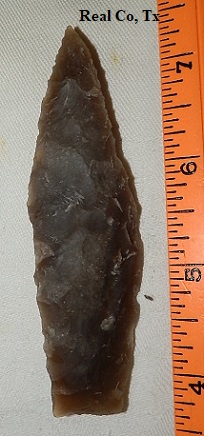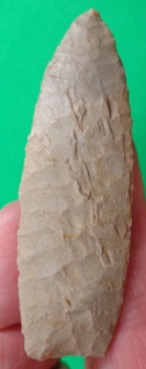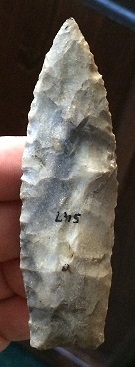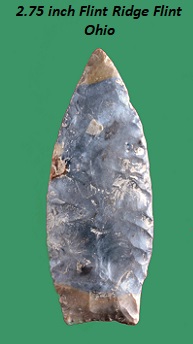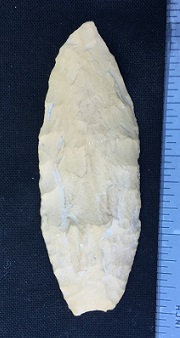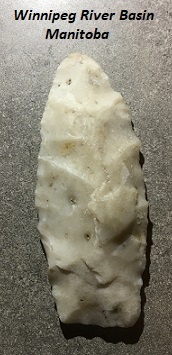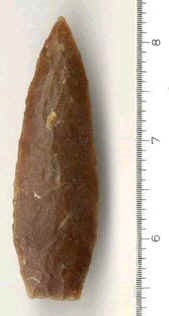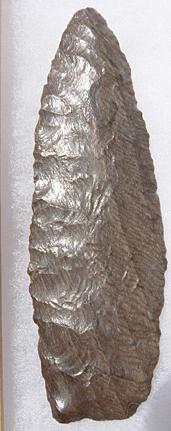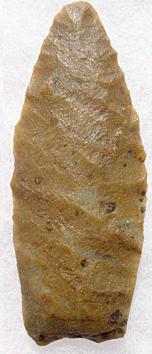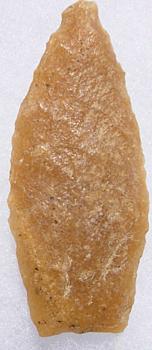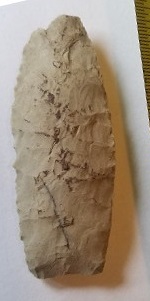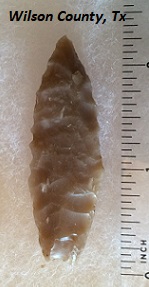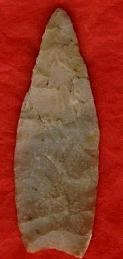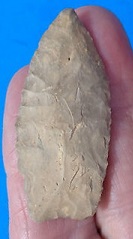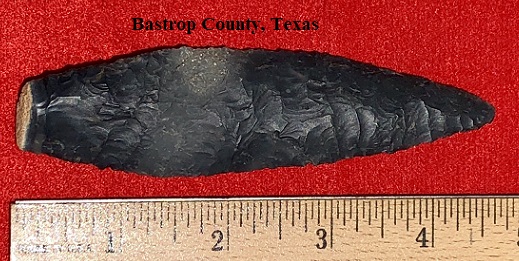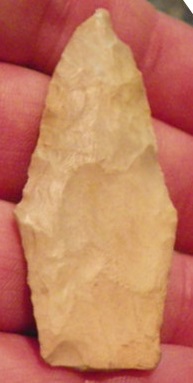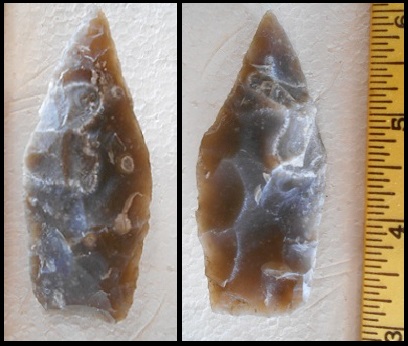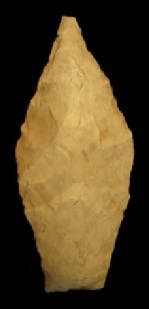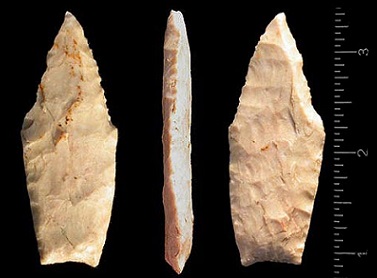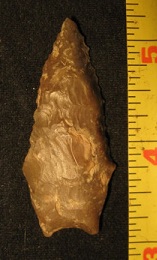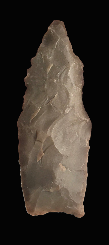Outline is Representative of Size and Shape:
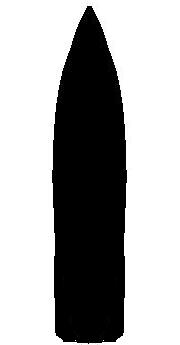
Name Details:
Identified By: Jack Hughes (discussed) / R. P. Wheeler (named)
Named For: Type Site location
Date Identified: 1949 / 1957
Type Site: The Ray Long Site (39FA65), Angostura Reservoir, South Dakota
Identified By: Jack Hughes (discussed) / R. P. Wheeler (named)
Named For: Type Site location
Date Identified: 1949 / 1957
Type Site: The Ray Long Site (39FA65), Angostura Reservoir, South Dakota
Point Validity:
Valid type
Hughes was a distinguished anthropologist who was considered a pioneer of Texas archaeology and a professor at West Texas University. This point was named in a professional publication and has many professional references. This is a valid type.
Hughes was a distinguished anthropologist who was considered a pioneer of Texas archaeology and a professor at West Texas University. This point was named in a professional publication and has many professional references. This is a valid type.
Angosuta Lanceolate
AKA: Long PointCluster: Plano Lanceolate Cluster
Description of Physical Characteristics and Flaking Pattern:
This is a medium to large (most average 3 inches in length) lanceolate point with an elliptical cross section. This point may range from the classic lanceolate shape to slightly articulated. The blade is narrow and most commonly an inward recurvate with the widest portion of the blade being the mid-section. The base ranges from straight to concave and may have basal thinning formed by the removal of vertical pressure flaking. Basal grinding and lateral edge grinding is present on this type. The most common flaking pattern in oblique parallel with random flaking also being common. This point is manufactured using even percussion flaking with long ribbon like pressure flaking forming parallel oblique pattern to a random flaking pattern. Less commonly seen is horizontal transverse.
Size Measurements:
Length - 50 to 105 mm (76 mm average), Blade Width - 18 to 42 mm (28 mm average), Thickness - 9 mm average
Length - 50 to 105 mm (76 mm average), Blade Width - 18 to 42 mm (28 mm average), Thickness - 9 mm average
Commonly Utilized Material:
Additional Comments:
These points were originally named Long Point for the Ray Long Site, Angostura Reservoir. The points were renamed Angostura points by R. P. Wheeler for the reservoir where the site was located (Cambron and Hulse, 1964). These points were renamed to Angostura to avoid confusion. It was felt that people may take the name "Long" as a characteristic instead of the name of the site.
This point is similar to the Plainview point, but the bases are distinctively narrower than the Plainview (Suhm and Krieger, 1954).
These points were originally named Long Point for the Ray Long Site, Angostura Reservoir. The points were renamed Angostura points by R. P. Wheeler for the reservoir where the site was located (Cambron and Hulse, 1964). These points were renamed to Angostura to avoid confusion. It was felt that people may take the name "Long" as a characteristic instead of the name of the site.
This point is similar to the Plainview point, but the bases are distinctively narrower than the Plainview (Suhm and Krieger, 1954).
Texas Angostura Types
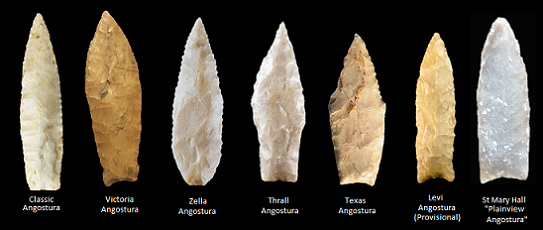
Distribution: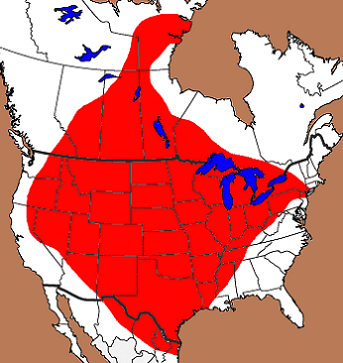

Distribution Comments:
These points are primarily found in the Plains regions of the United States and into the Plains of Canada. They have been reported east into the Great Lakes region and into the Tennessee River valley. They have been found as far south as the Rio Grande River Basin of Texas and Mexico and into the surrounding regions.
These points are primarily found in the Plains regions of the United States and into the Plains of Canada. They have been reported east into the Great Lakes region and into the Tennessee River valley. They have been found as far south as the Rio Grande River Basin of Texas and Mexico and into the surrounding regions.
Age / Periods:
Date: 10,000 - 8,000 B.P.
Cultural Period: Late Paleo to Early Archaic
Glacial Period: Late Pleistocene to Early
Holocene
Culture:
Date: 10,000 - 8,000 B.P.
Cultural Period: Late Paleo to Early Archaic
Glacial Period: Late Pleistocene to Early
Holocene
Culture:
Age Details:
Other points in this cluster / Related / Associated Points:
Agate Basin, Arkabutla, Belen, Browns Valley, Hell Gap, Lerma, Midland, Milnesand, Plainview, Zella
Agate Basin, Arkabutla, Belen, Browns Valley, Hell Gap, Lerma, Midland, Milnesand, Plainview, Zella

